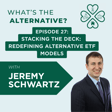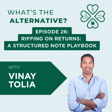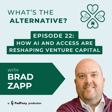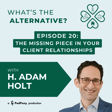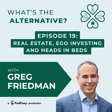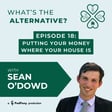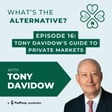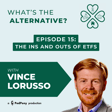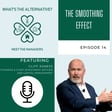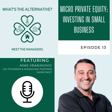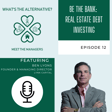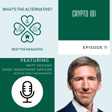
What's the Alternative? | Episode 1 | The Trend is Your Friend featuring Phil Toews
Welcome to Banrion Capital Management’s What’s the Alternative Podcast! Join host Shana Orczyk Sissel, the “Queen of Alternatives” Founder & CEO of Banrion Capital Management, as she interviews leaders in the alternative investment space. Learn more about their firms, their passions and about the many different ways investors can use alternative investments to add value in their investment portfolios.
Our premiere episode "The Trend in Your Friend" features Phil Toews, Founder and CEO of Toews Asset Management discussing his passion for trend following strategies and how advisors can use them to manage risk in client portfolios.
Phil grew up under the strict rules and frugality of the Mennonites in rural Kansas. As he broadened his horizons and eventually landed in New York, he found that he thrived on expanding boundaries and challenging conventional thinking.
In 1994, Phil founded Toews Corporation with a mission to help investors realize their goals while addressing the economic and psychological challenges they face.
Learn more about Toews: Toews Asset Management
Connect with Phil on LinkedIn: Phil Toews
Learn More About Banrion: Banrion Capital Management
Connect with Shana on LinkedIn: Shana Orczyk Sissel
Connect with Shana 𝕏: @shanas621
Important Disclosures:
The opinions expressed on the “What’s the Alternative Podcast” are for general informational purposes only and are not intended to provide specific advice or recommendations for any individual or on any specific security.
It is only intended to provide education about the financial industry. To determine which investments may be appropriate for you, consult your financial advisor prior to investing. Any past performance discussed during this program is no guarantee of future results.
The guests featured on this program are participants on Banrion Capital Management’s platform. As such Banrion may receive payment for their participation as a platform partner.
Any indices referenced for comparison are unmanaged and cannot be invested into directly. As always please remember investing involves risk and possible loss of principal capital; please seek advice from a licensed professional.
Investments are not FDIC-insured, nor are they deposits of or guaranteed by a bank or any other entity, so they may lose value.
Investors should carefully consider investment objectives, risks, charges and expenses. This and other important information is contained in the fund prospectuses and summary prospectuses, which can be obtained from a financial professional and should be read carefully before investing.
Statements attributed to an individual represent the opinions of that individual as of the date published and do not necessarily reflect the opinions of Banrion Capital Management or its affiliates. This information is intended to provide educational value, highlight issues and should not be considered advice, an endorsement or a recommendation.
All Banrion Capital trademarks mentioned are owned by Banrion Capital Management, Inc., an affiliated company or fund. All other company and product names mentioned are the property of their respective companies.
